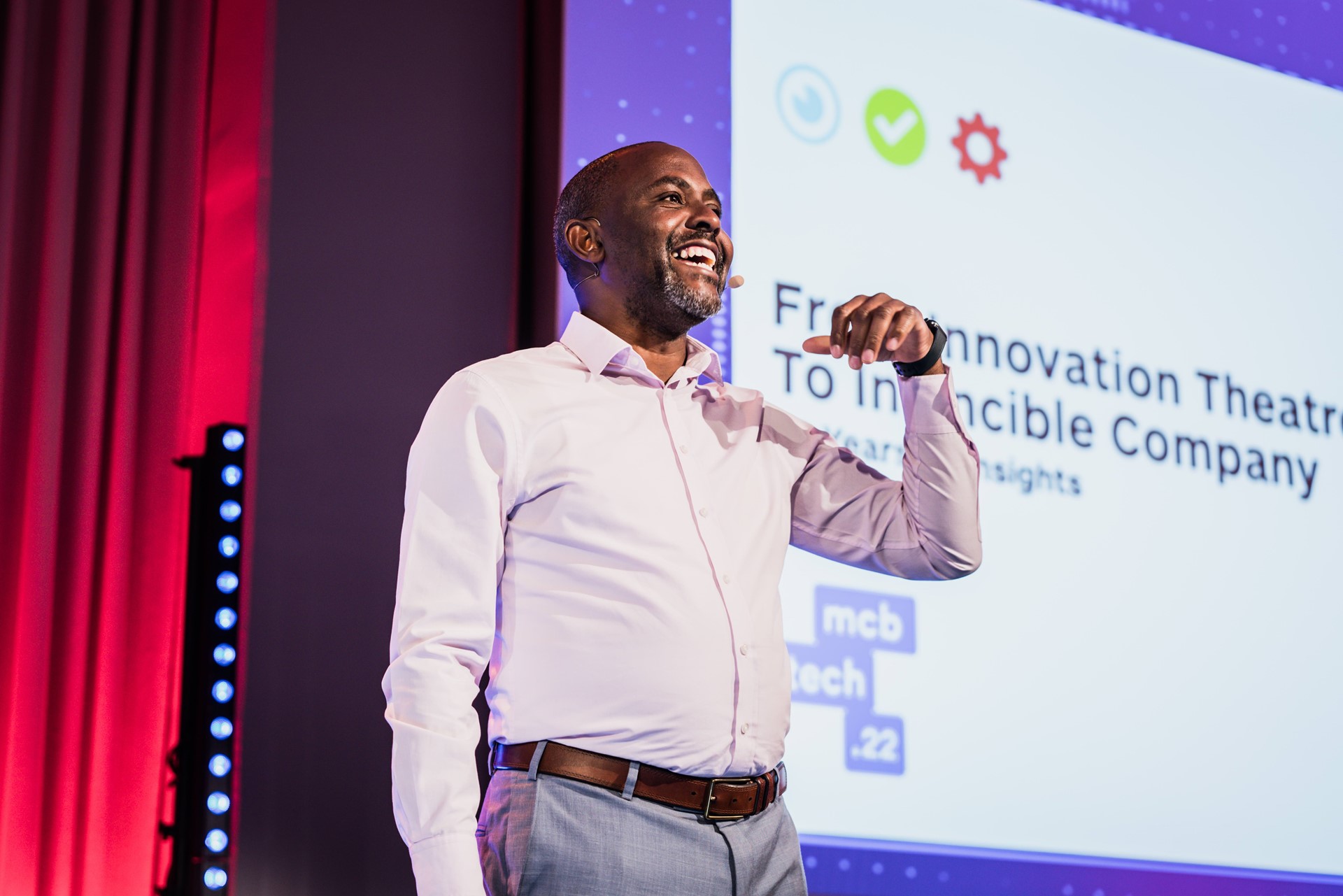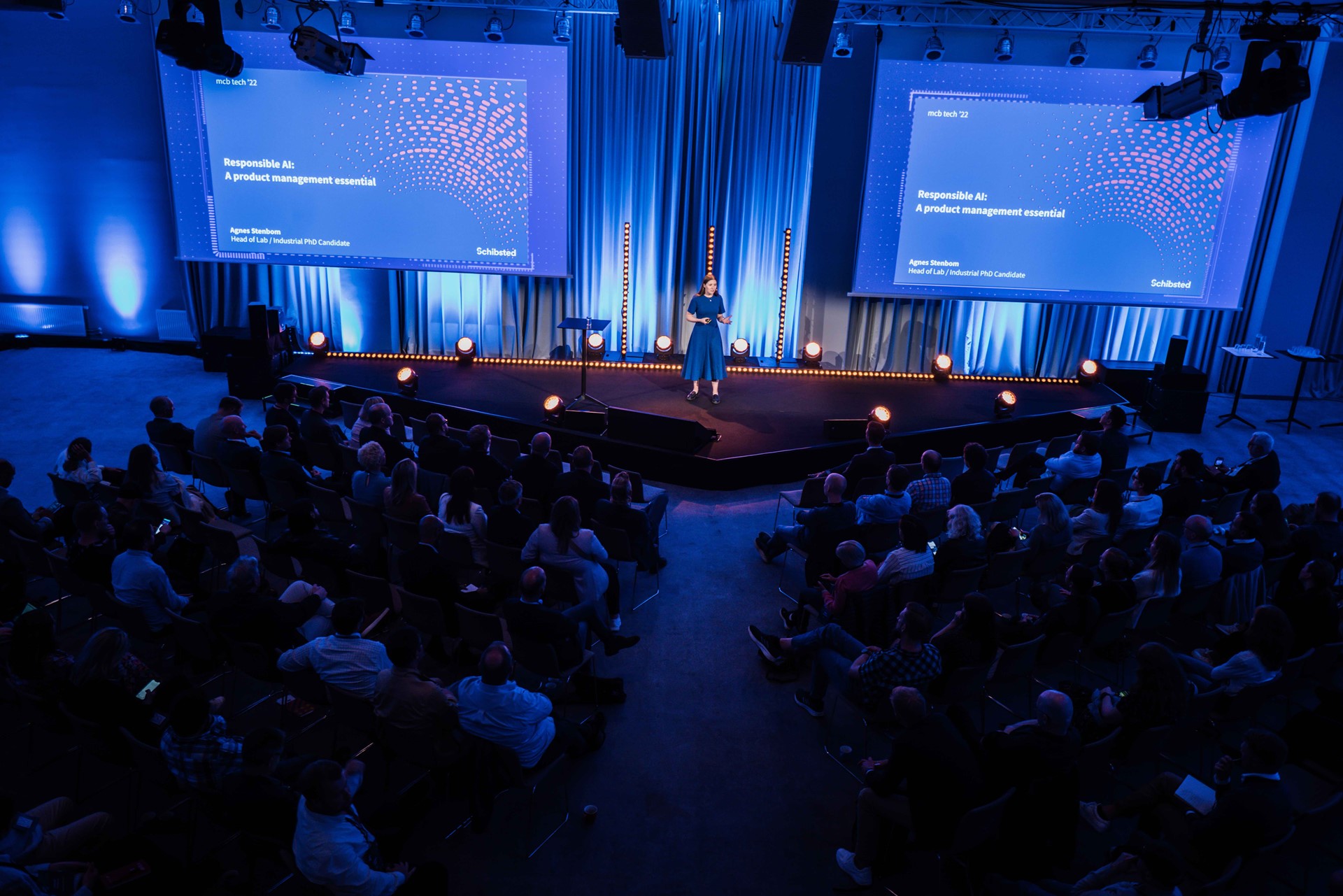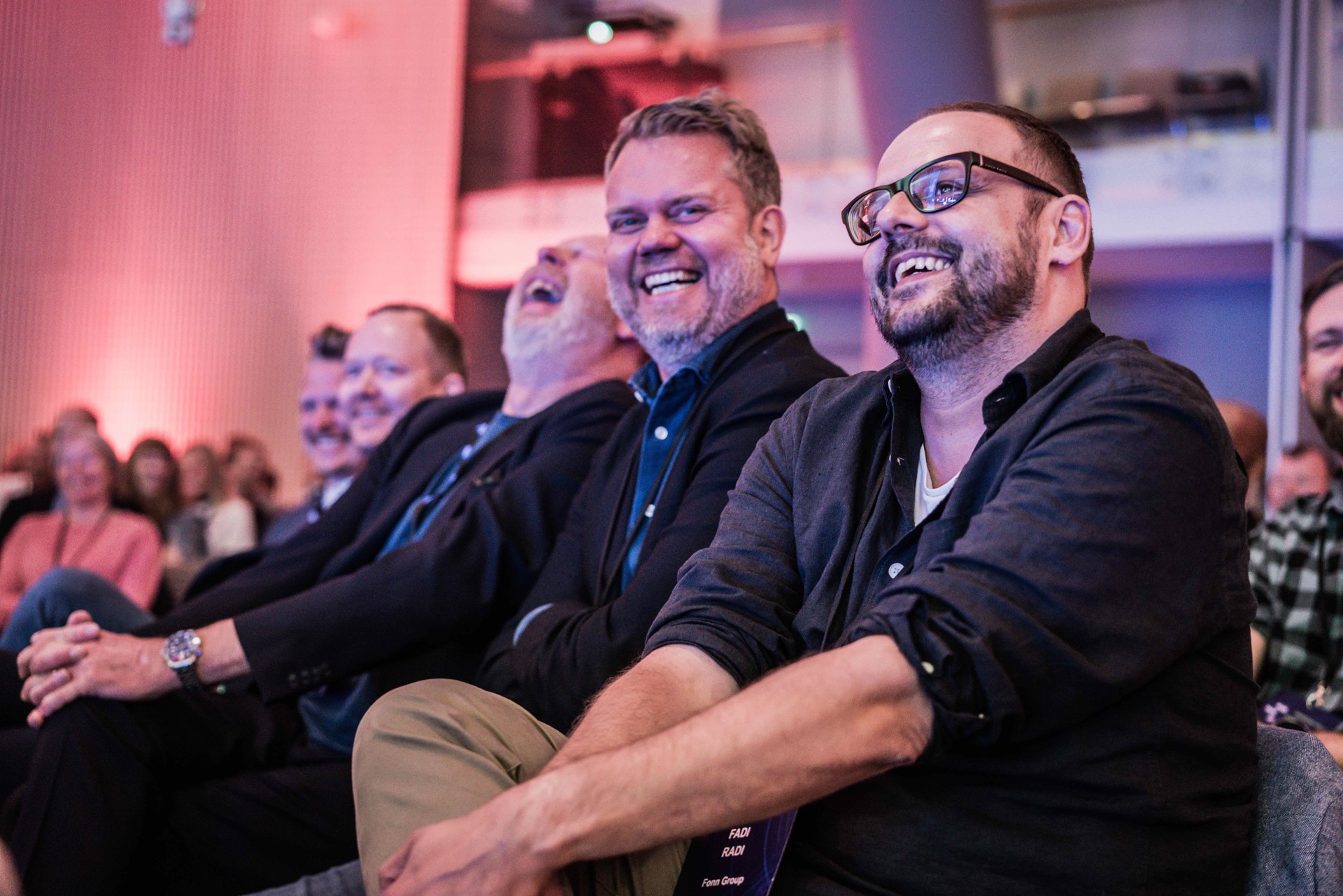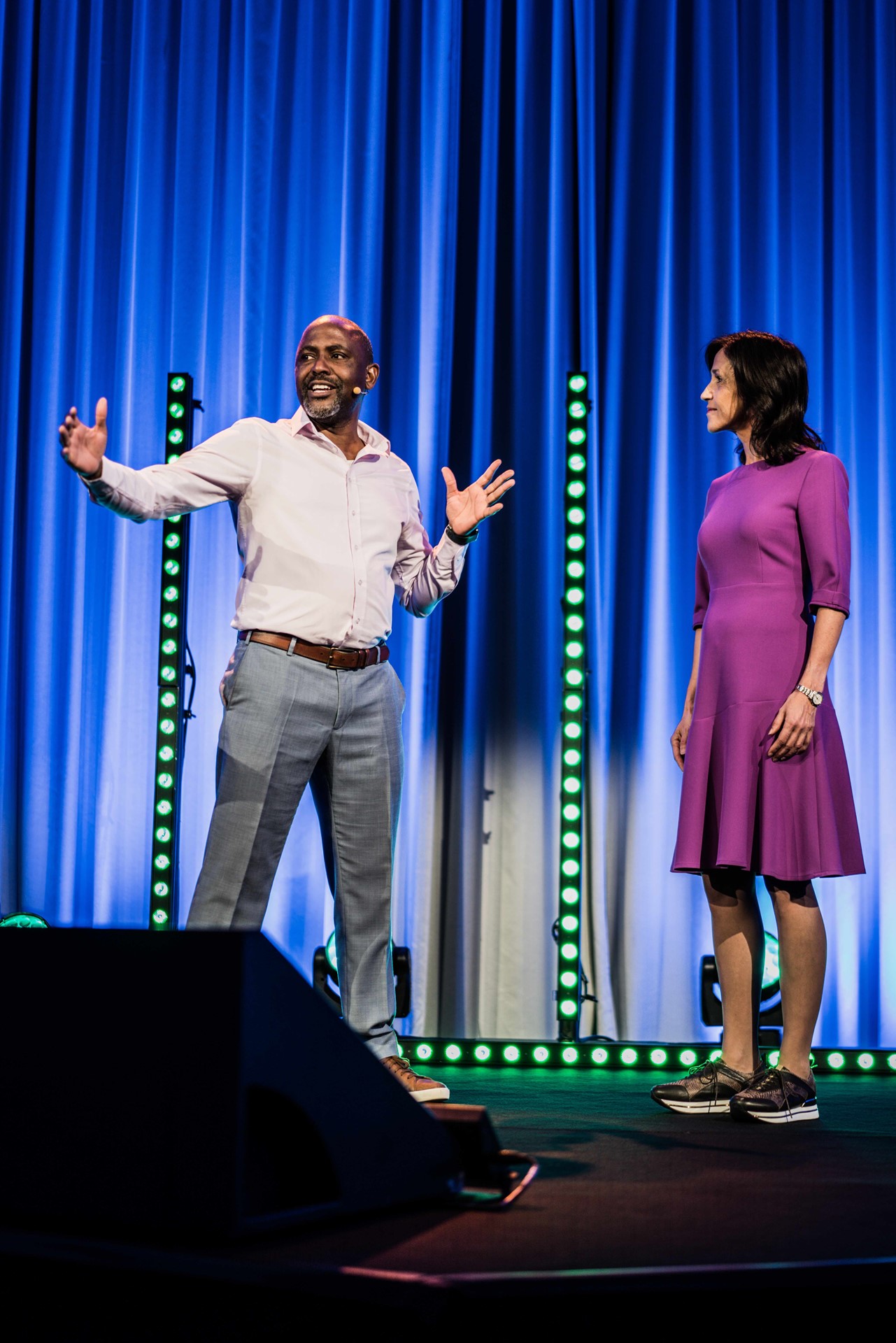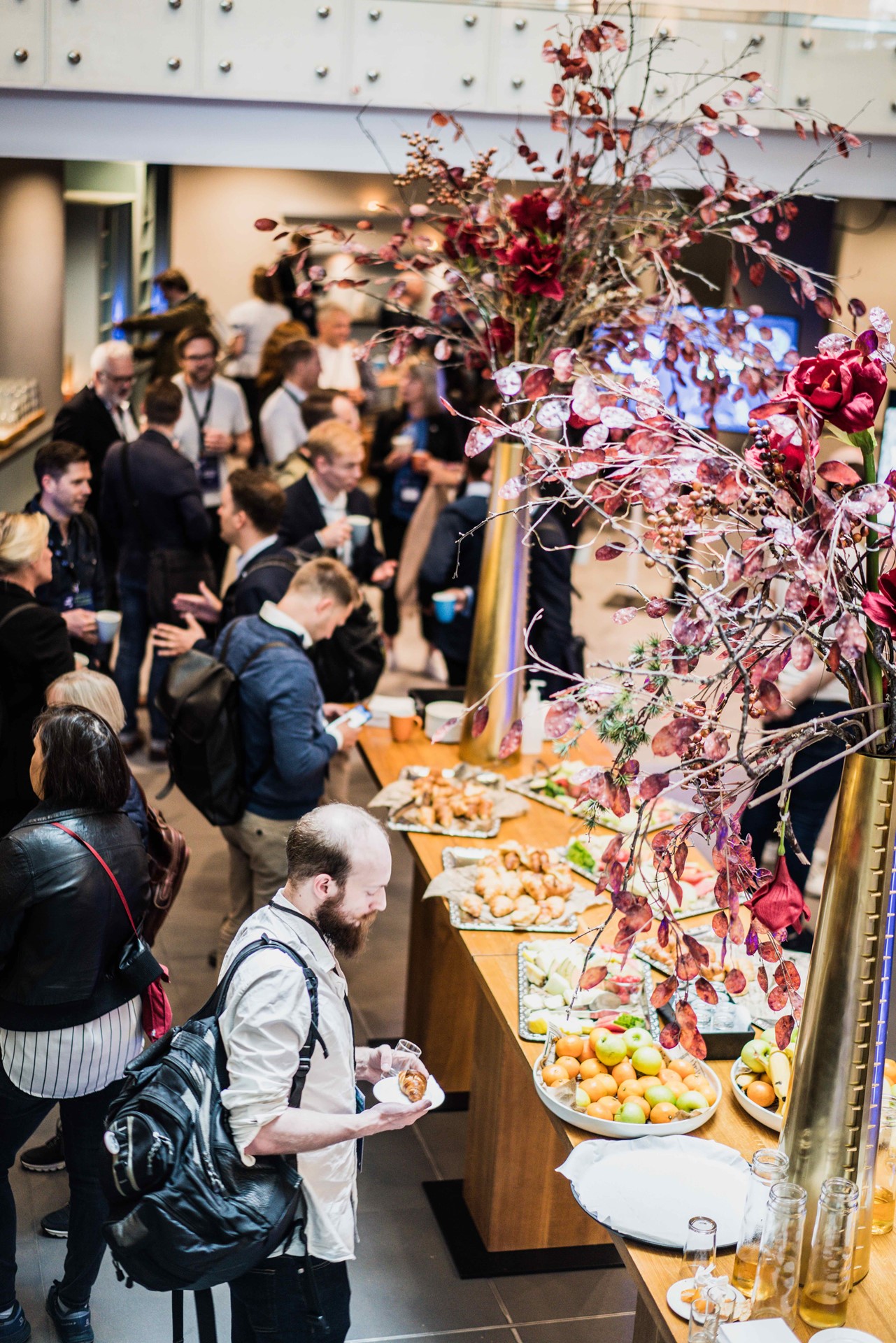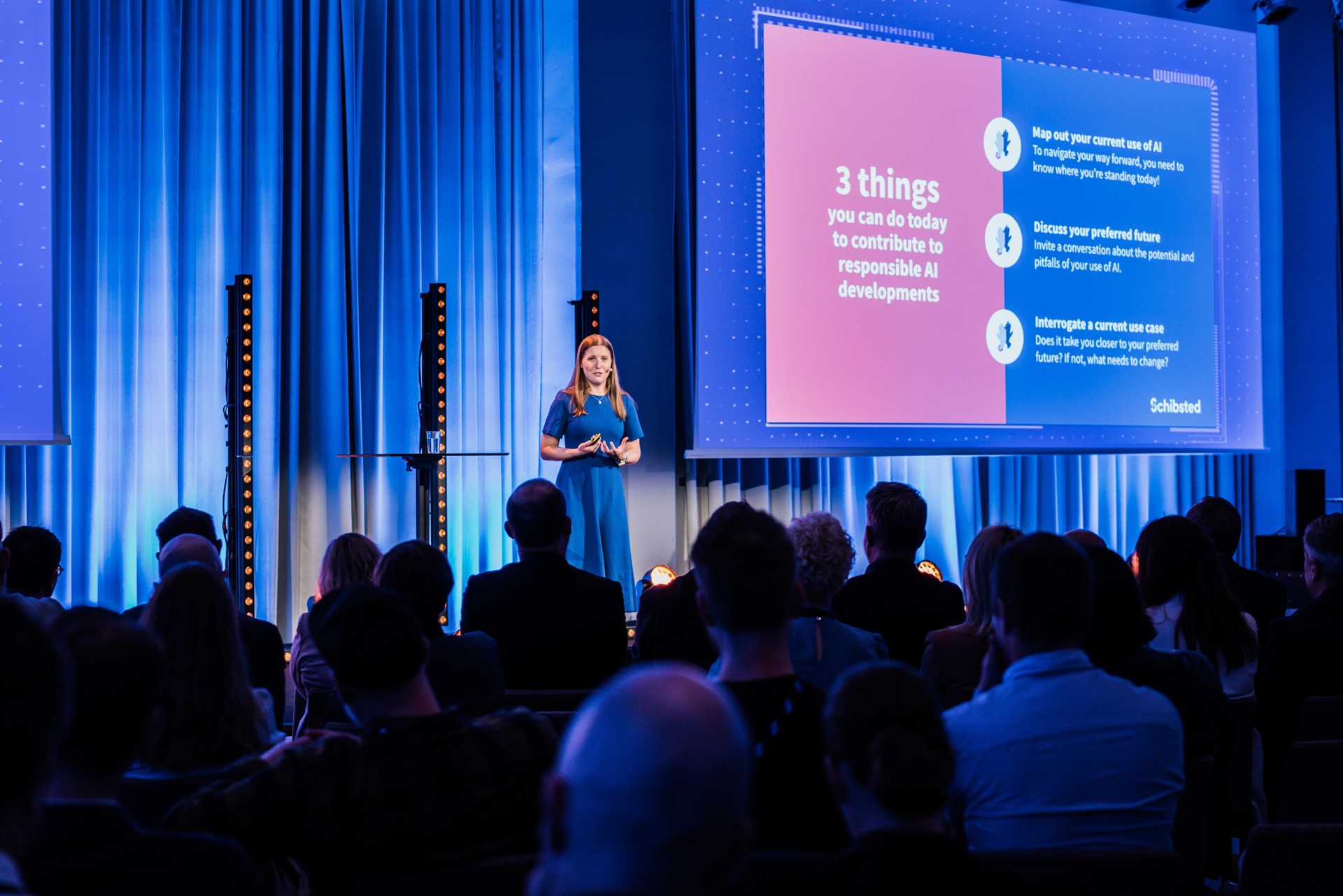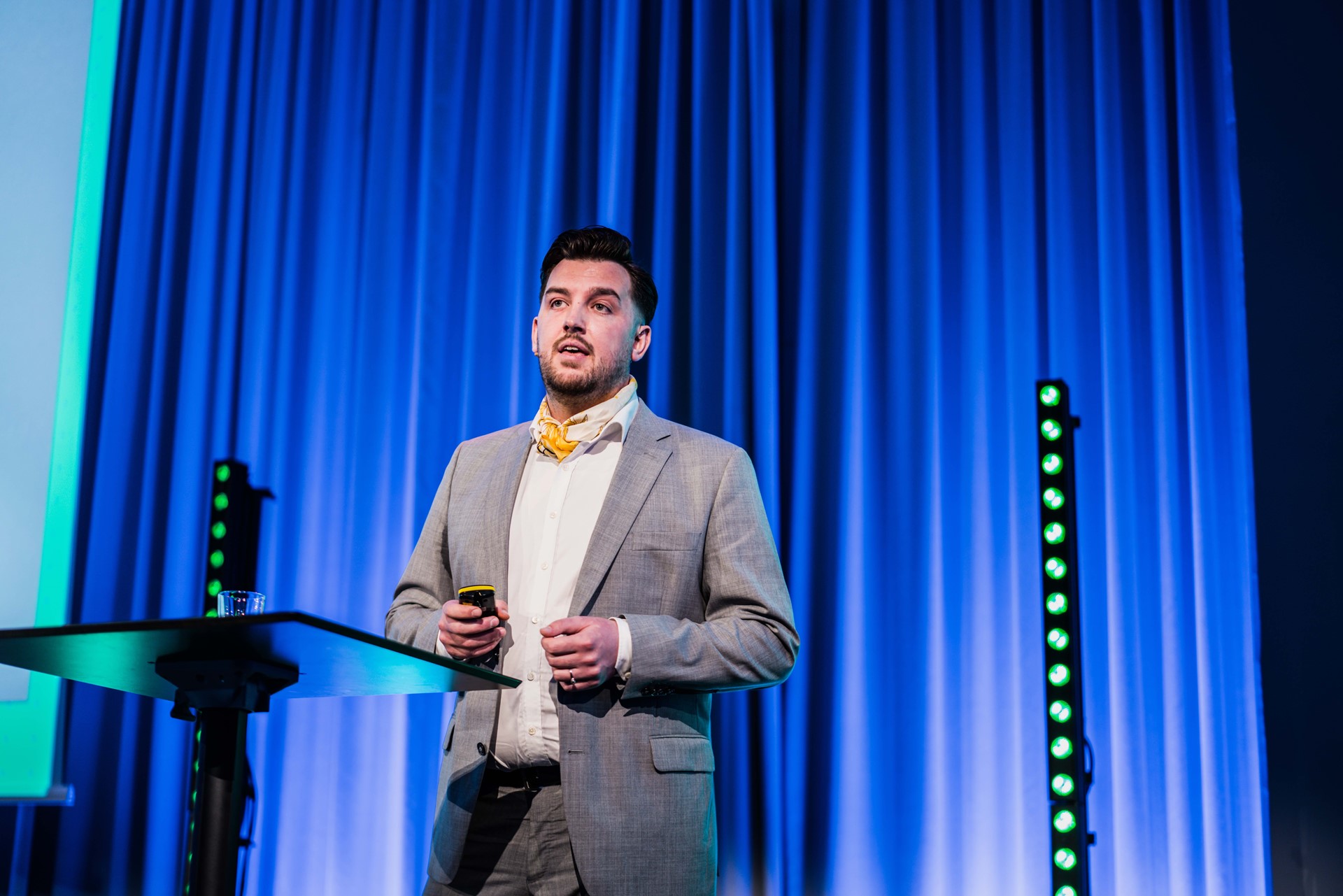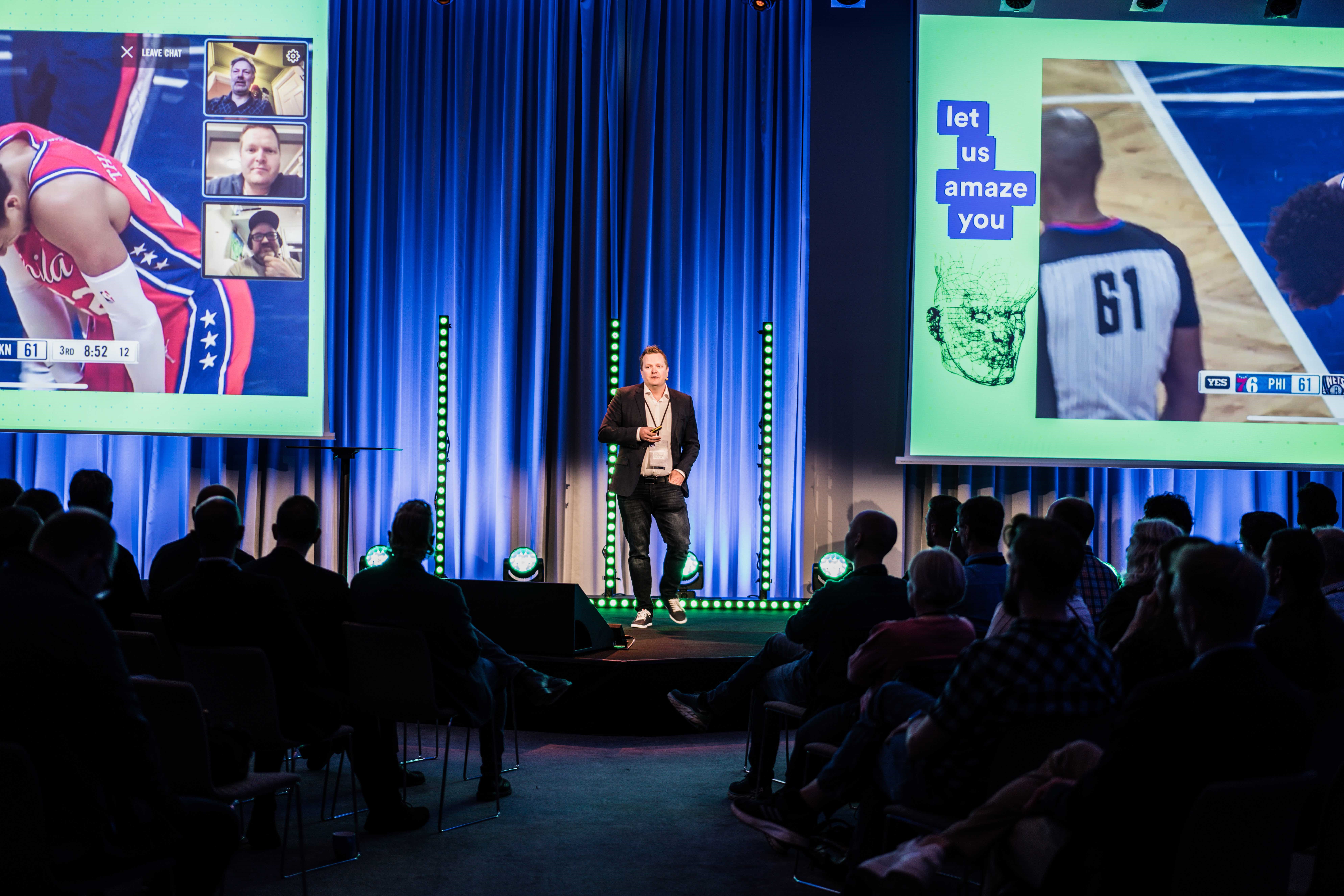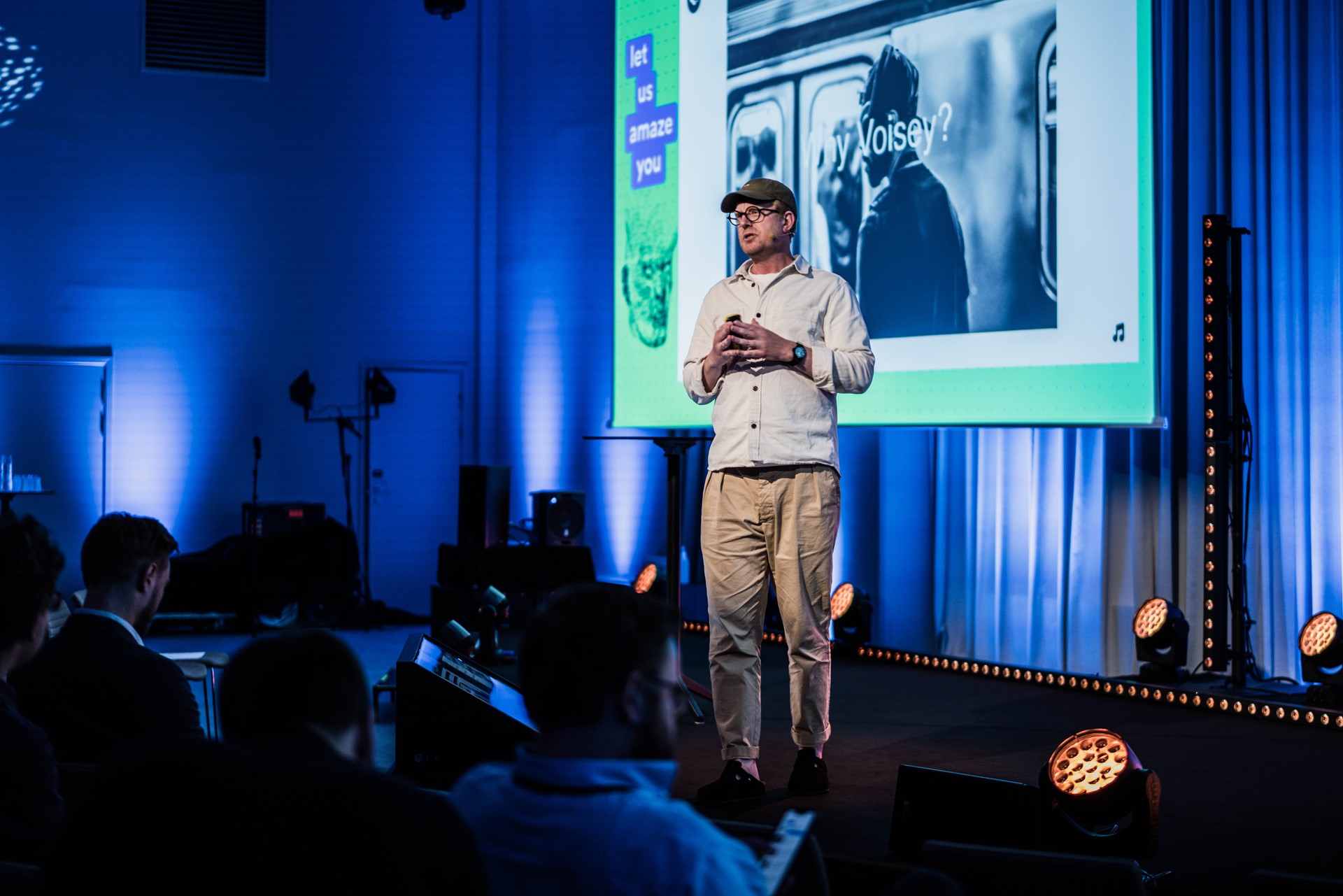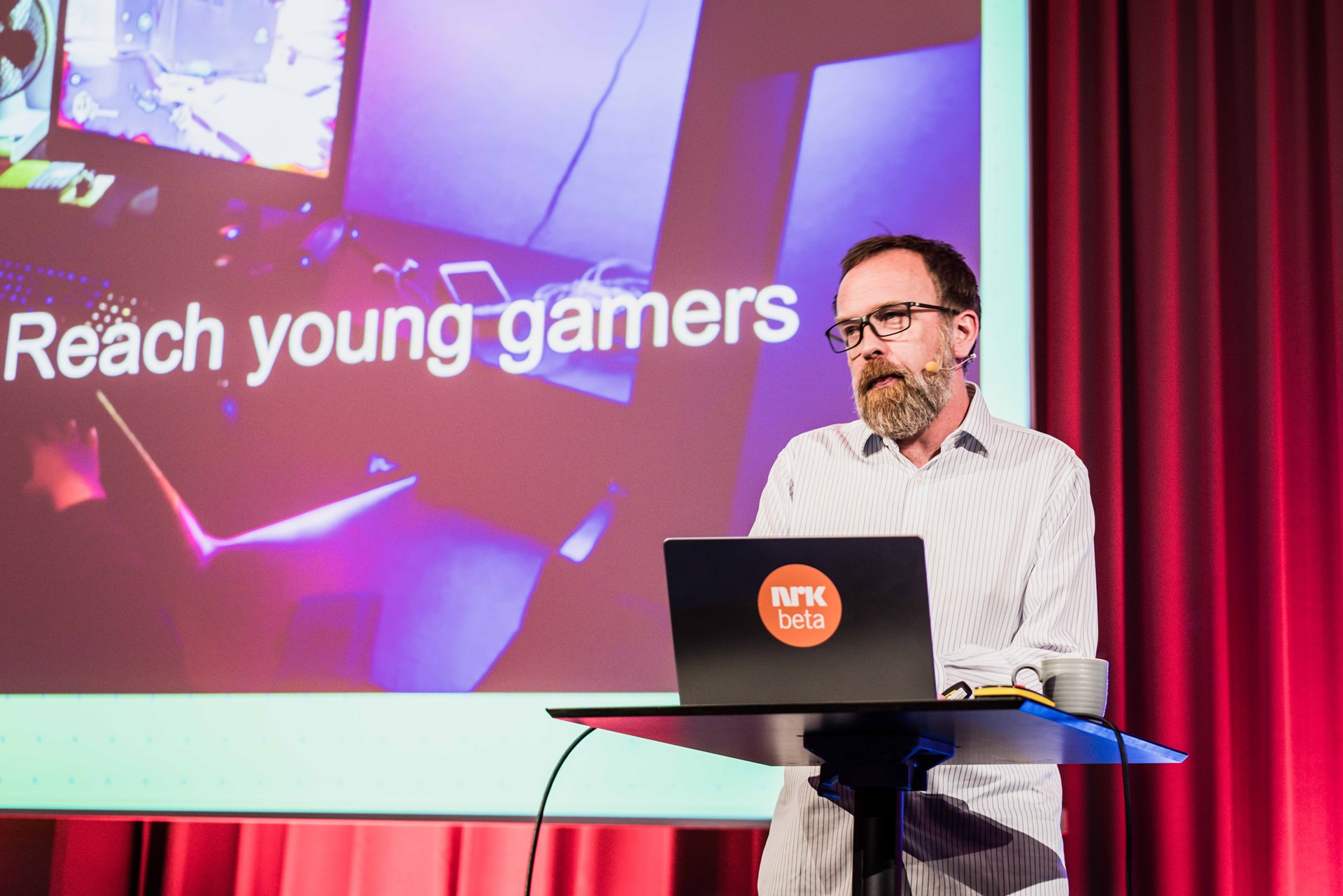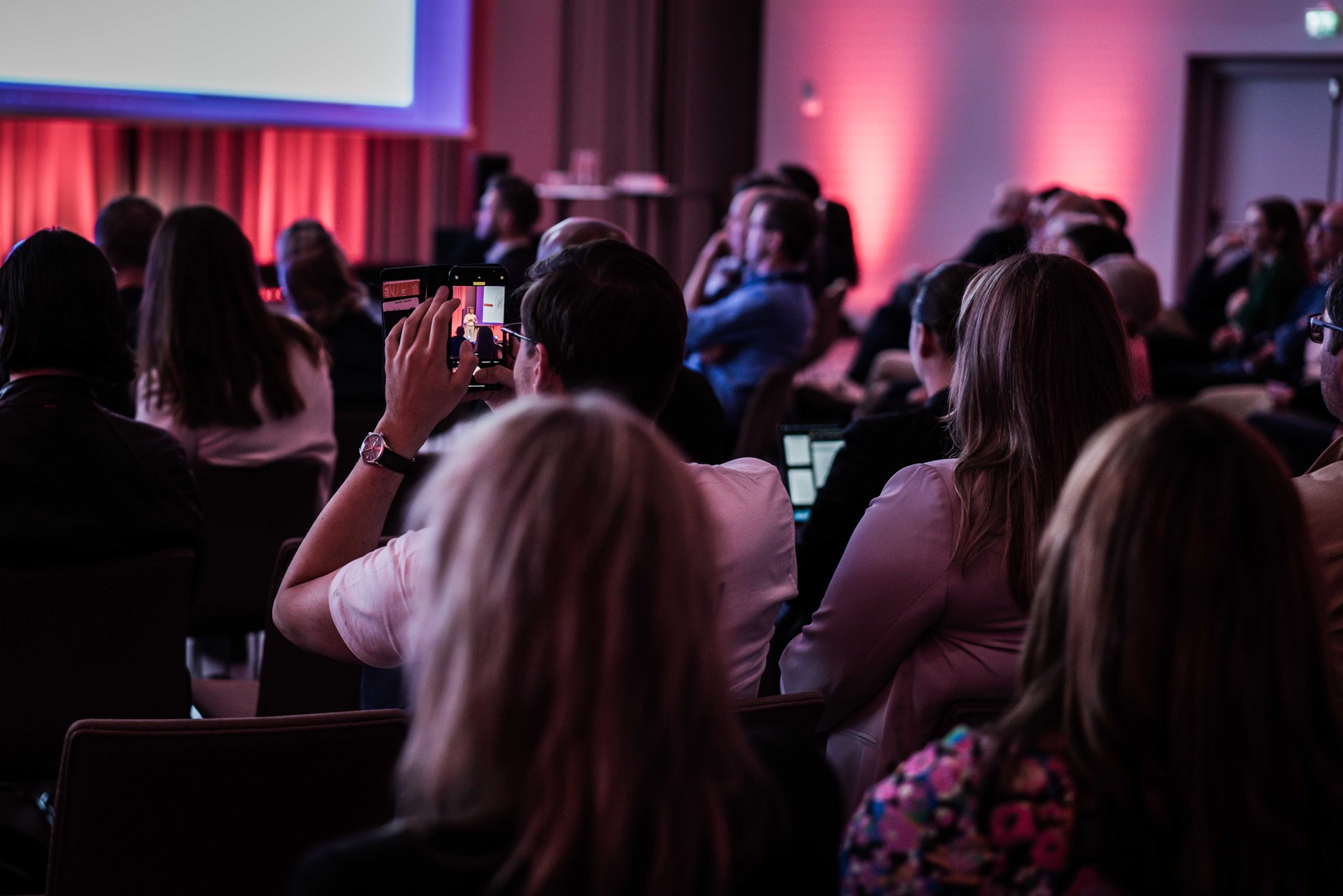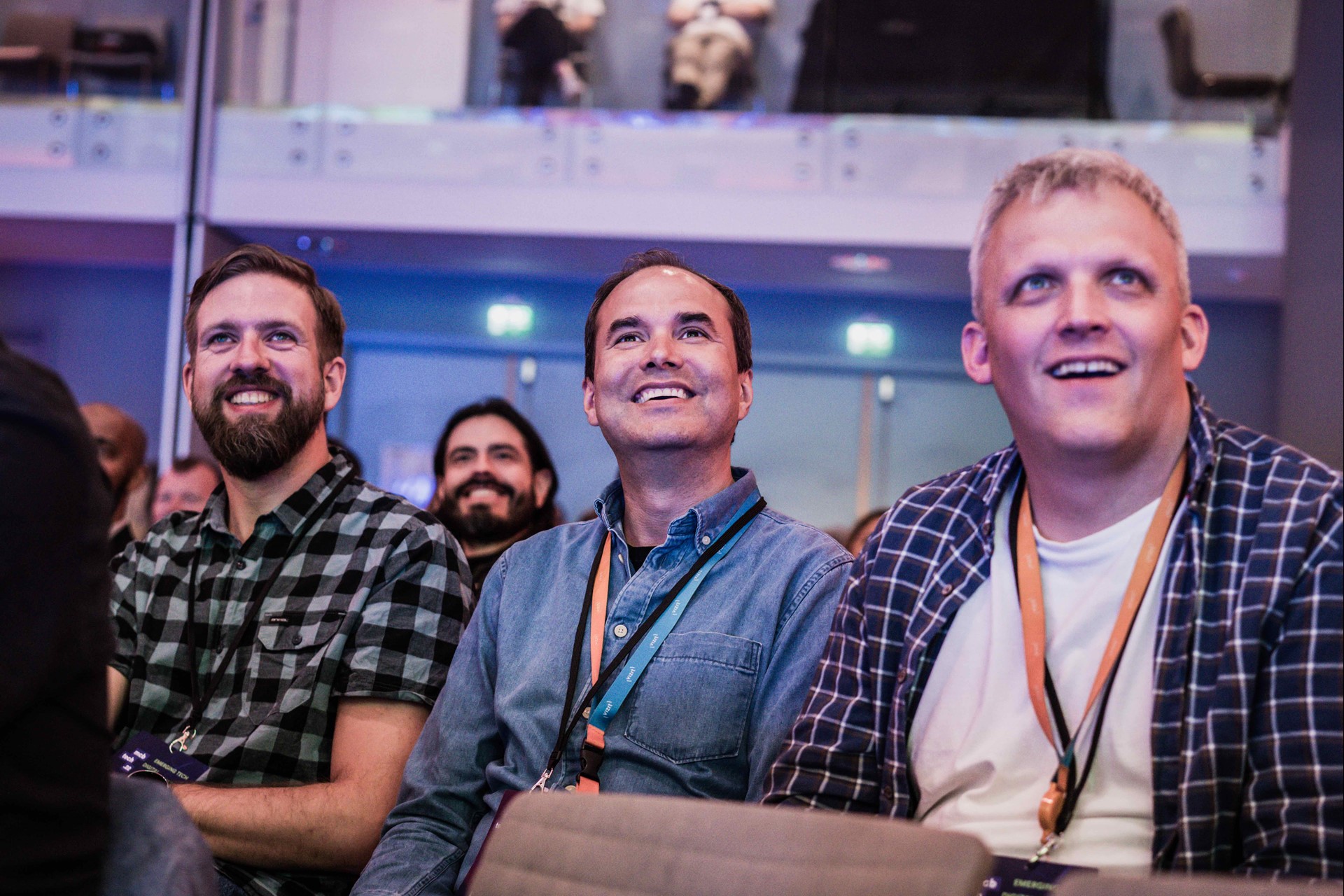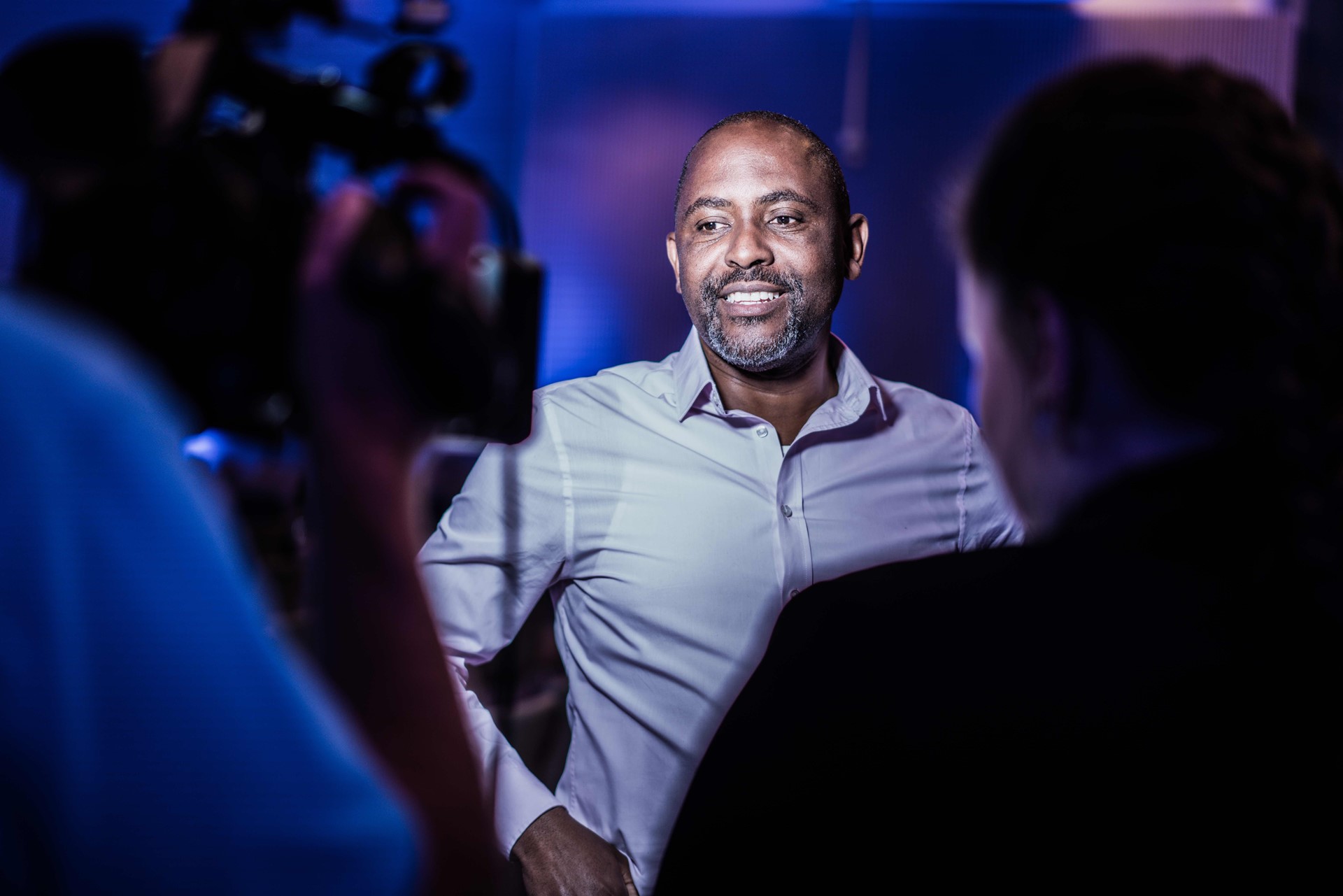Siri Lill Mannes, the mcb tech .22 conference host, welcomed the audience and started with a short interview with Tendayi Viki to give them a glimpse of what they could expect from his keynote later on in the program. Viki is an award-winning author and corporate innovation expert. He is the author of three books, the most recent being Pirates In The Navy: How Innovators Drive Transformation.
According to Viki, Steve Jobs believed being a pirate was more fun than joining the navy. Viki describes innovators in large companies as "pirates in the navy." And the good news: It's unnecessary to leave the navy to be a pirate, Viki says.
– We have to learn from the pandemic. What were the principles behind being able to react that fast? Asks Viki.
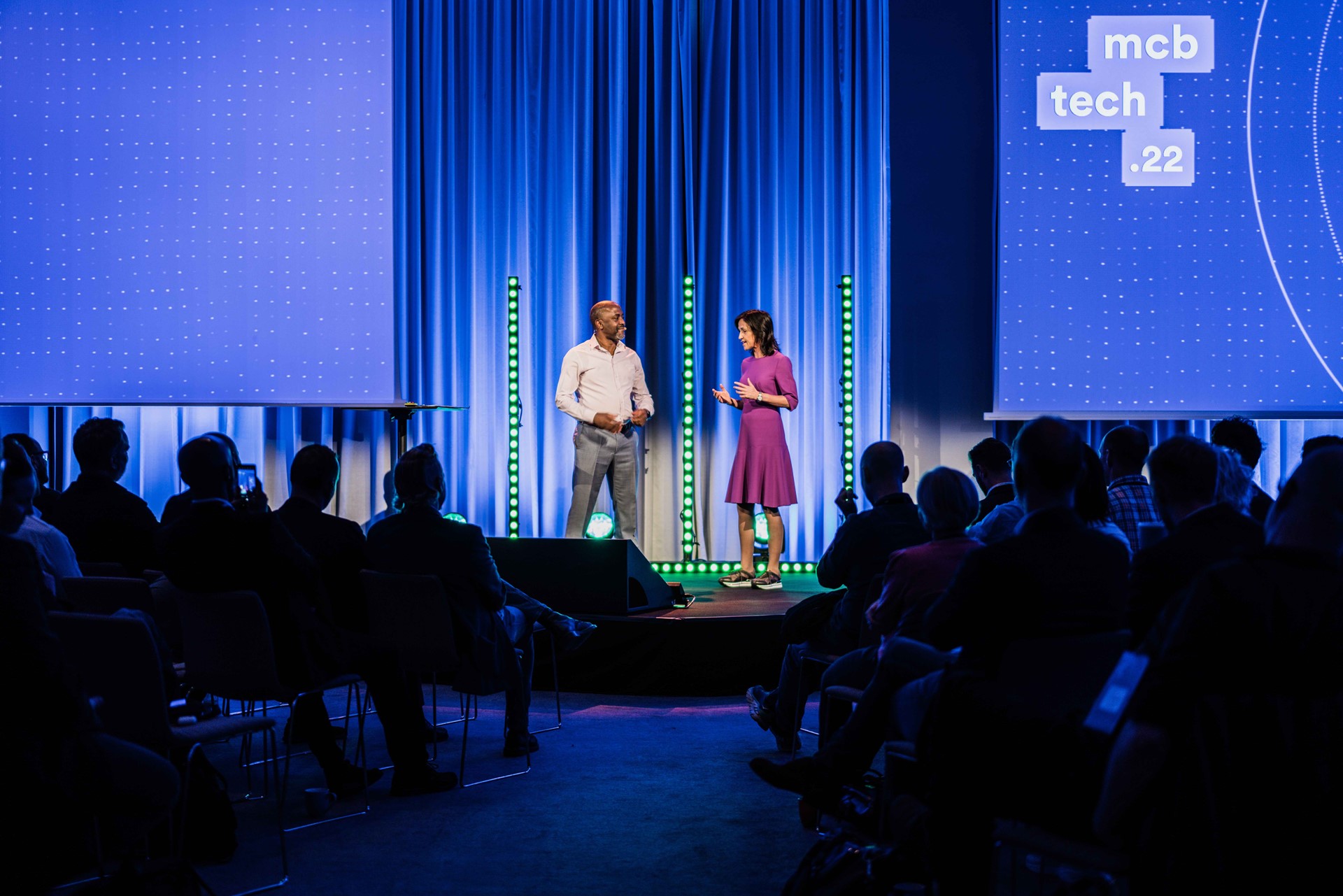
Music, newspapers, and everything else
Have you ever felt overwhelmed by the ever-changing tech landscape, trying to figure out what matters and how it affects you and your company? Imagine if someone could break it down and give you the key takeaways from the tech scene. That person might be Ben Evans. He is an internationally renowned expert on emerging trends who has spent 20 years analyzing telecommunication, media, and technology, and has worked in equity research, strategy, consulting, and venture capital. These days he's an independent analyst, mostly trying to figure out what questions to ask.
– Everything the Internet did to music and newspapers is now happening to everything else, says Benedict Evans.
Evans says 40 per cent of non-food retail in the UK is now online and that the Amazon Marketplace creates 60 per cent of Amazon's total revenue.
The retail business is changing radically, for example, when international corporations enter new markets or countries.
– Should I only do marketing in a country or open stores there? Everything is marketing or advertising now. Before, it was about opening stores, says Evans.
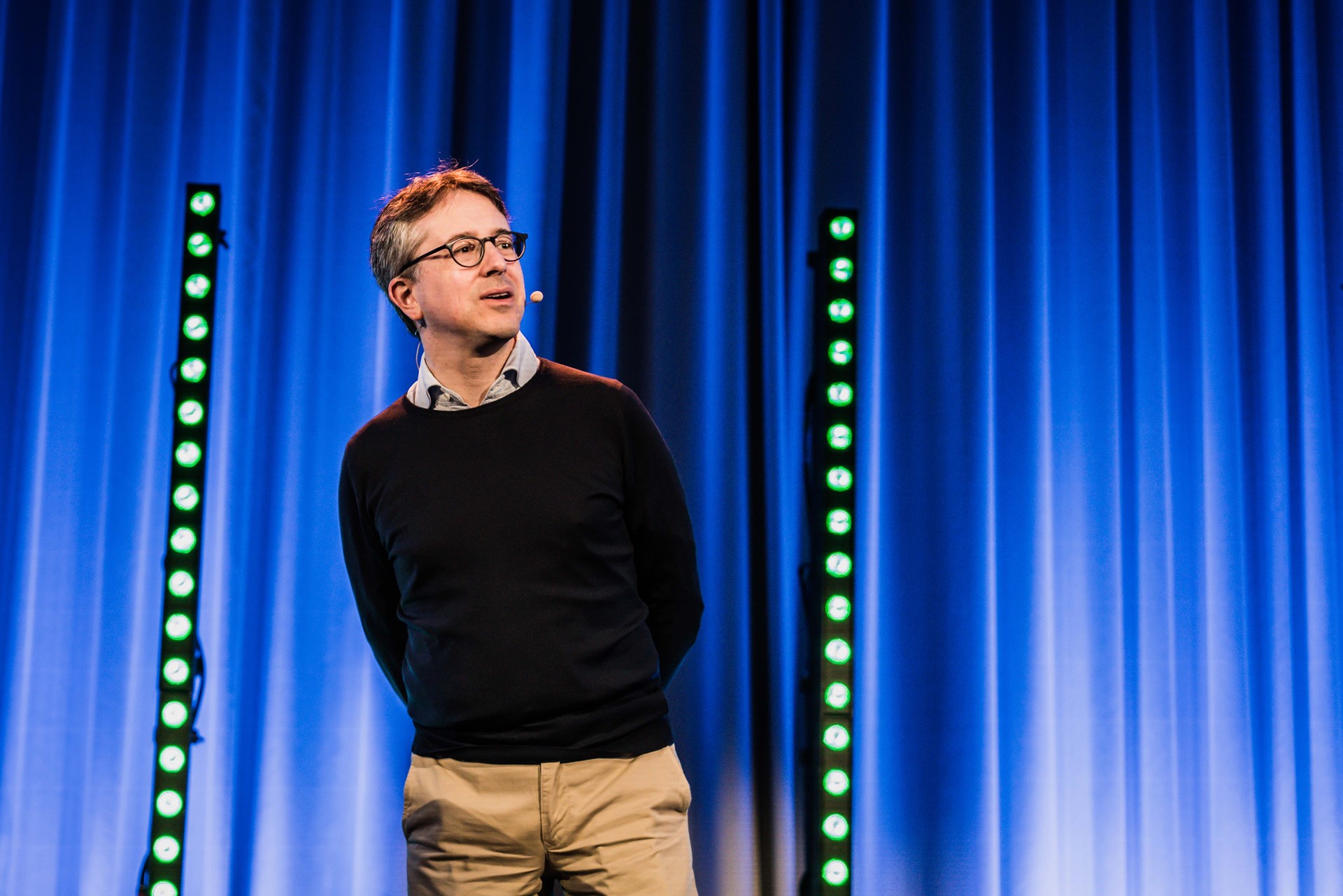
Self-censorship in Schibsted
– Body fluids are banned on social media. In a specific case, we chose not to publish a photo of a Ukrainian woman with blood on her face. We self-censorship because we know such images are not tolerated on social media. This limits us, says Petra Wikström, Director for Public Policy at Schibsted.
She emphasizes five critical challenges for Schibsted when it comes to Big Tech.
– Social networks are removing our newspaper's editorial content. Subscription selling issues. No access to our user's data. Lost revenue from online advertising. And strong ambitions to end targeted advertising.
The Digital Service Act and the Digital Market Act will affect all companies that use personal data for targeted advertising.
– Google and Facebook's rules dictate us. For our apps, we have to pay 30% of our revenue to Apple and Google. And 35 per cent of add purchases disappear, says Wikström.
She explains that the most urgent challenge for Schibsted is the commercial models of Apple and Google. But if we look to the Netherlands, Wikström says, there might be hope.
– Apple in the Netherlands has been required by the authorities to allow third-party payment providers in their App Store, but nothing has changed yet. They choose to pay daily fines instead. It's essential that the media industry has a unified voice in this, says Wikström.
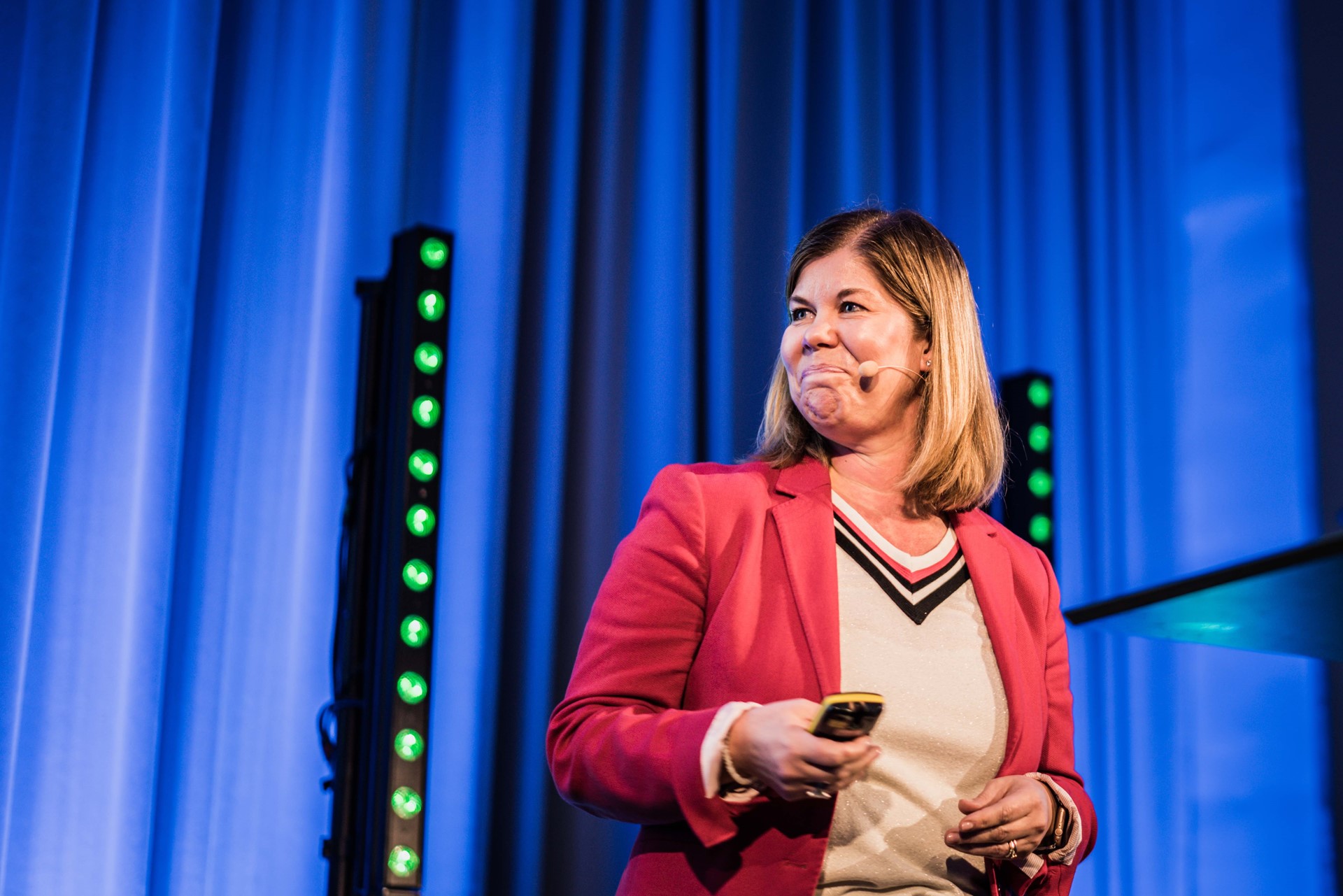
New regulations for Big Tech
Have the Tech Giants amplified disinformation and extremism with no accountability? Angela Mills Wade from the European Publishers Council, Petra Wikström from Schibsted and Gry Haugsbakken from the Ministry of Culture and Equality in Norway joined a panel discussion on this theme.
– The Digital Services Act is a bit of a disappointment. How do we define harmful content? How do we deal with ads targeting children? And what role should politicians play? Something has to be done, says Mills Wade from the European Publishers Council. The council is a high-level group of Chairmen and CEOs of leading European media groups representing companies active in news media, television, radio, digital marketplaces, journals, eLearning, databases, and books.
– We try to collaborate to ensure news media works on these platforms and that the news gets out. Fighting "fake news" is essential for strengthening the editorial media's position. We want editorial news media and freedom of speech, says Gry Haugsbakken (Labour Party), state secretary at the Ministry of Culture and Equality in Norway.
The Digital Service Act is essential, says Haugsbakken. She and her colleagues have tried to dialogue with the big social media companies.
– It has been challenging getting Big Tech companies to talk with us. We recently had a meeting with Google and Facebook. We want editorial news to be whitelisted, but we did not get that through. But we hope Norway can be a country where they can eventually test whitelisting of the news media, says Haugsbakken.
– We also hope that Apple wants to join the conversation. We have to continue to push the tech-giants, says Haugsbakken.
Angela Mills Wade hopes the Nordic countries and the UK can be forerunners in working on these challenges.
– The Nordics and the UK have a strong tradition of freedom of the press. She says it is crucial to develop the laws, and these countries can take the lead.
– For us, editorial freedom is the most important. We need social media platforms to reach groups such as young people, says Petra Wikström.
Siri Lill Mannes, the conference host, has a final question for the politician.
– How confident are you? Do you have the tools to take on the Big Tech companies, Gry?
– We have the tools, but I'm not sure if we – the European countries – have the will to do it. One fear is that editorial companies can sail under a false flag, says Gry Haugsbakken.
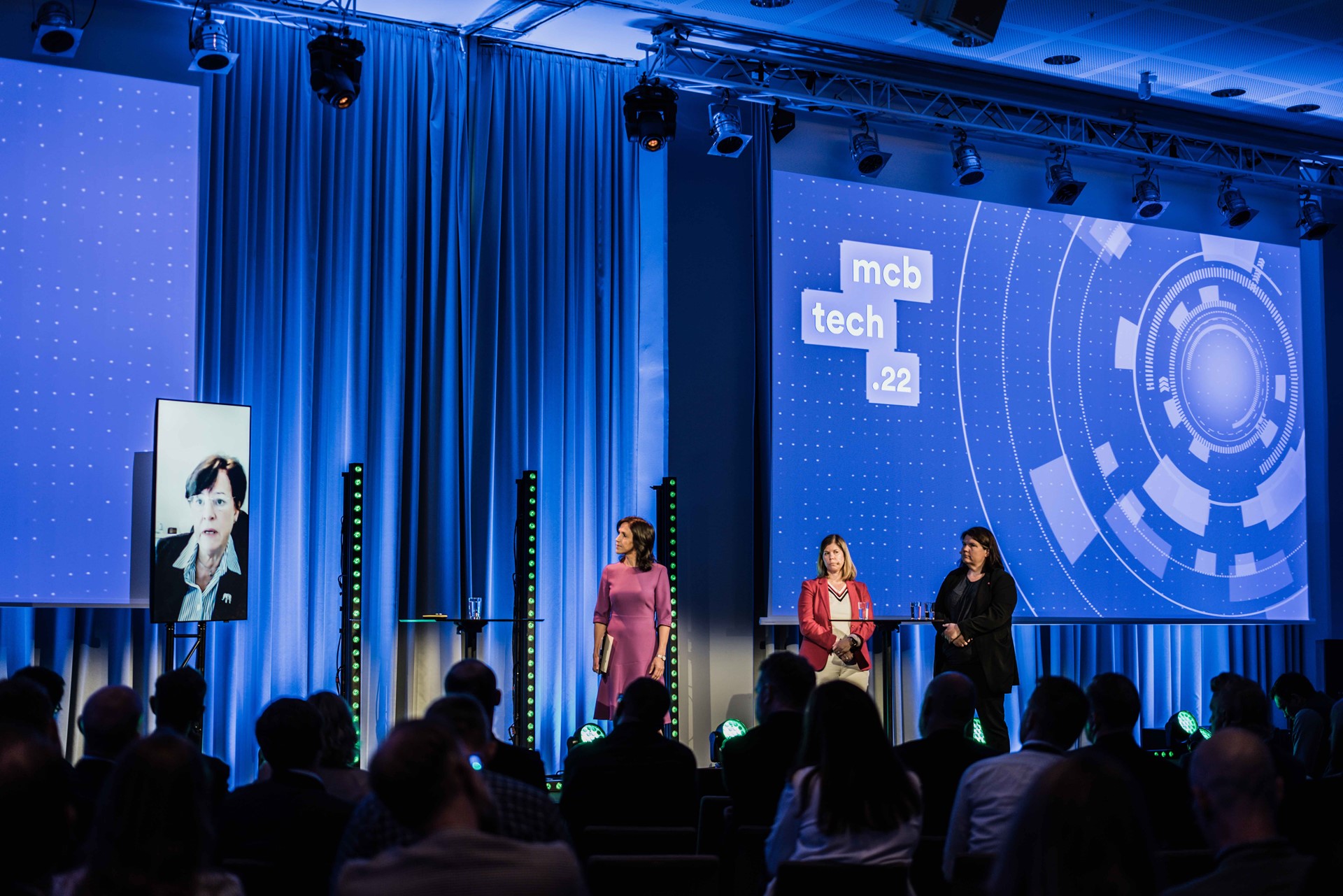

Cyber wakeup call
– I remember a lot of trouble in my life. But most of it never happened, says Torgeir Waterhouse.
Waterhouse is a former director at IKT Norway and now founder and partner at Otte. Together with Per Thorsheim, Chief Information Security Officer, BankID & BankAxept at Vipps, he talked about how we can prepare for the future when it comes to cyber-attacks. Cyber adversaries plan their attacks with both a short and a long view. Although it's difficult to predict the future, we must prepare to mitigate potential threats.
There are many steps organizations can take to avoid making news headlines for all the wrong reasons. So even though there are many challenges, one thing is for sure: Forward-thinking cybersecurity will be a priority for years to come.
– We need to be prepared. People are the real issue, not the technology. People have feelings, and that makes it difficult, says Waterhouse.
Surveys reveal that many companies do not focus on preventing attacks because they don't think they will be affected.
– One of four leaders believes their companies can't be attacked. The truth is that everyone can be struck, says Waterhouse.
He urges all companies to do the following to avoid attacks:
– Practise, prevent, surveil, register, handle, repeat.
– People are afraid of asking dumb questions. When it comes to cyber security, there are no dumb questions, only necessary questions, says Per Thorsheim.
He explains that lack of information and access is also a security problem. Thorsheim recommends people to write down their passwords on paper, keep it at home, and make someone else know about it in case of an emergency.
– If something happens with your colleague or daughter, you can help, says Thorsheim.
It's embarrassing to be tricked, but even Nicolai Tangen, CEO at Norges Bank Investment Managing, was hacked. Norges Bank hired professional hackers to try to trick Tangen, and after a short while, they got complete control of his computer.
– How necessary are the email addresses for the hackers, asks the host.
– With access to your email, I can access your whole life in one hour, says Thorsheim.
Thorsheim and Waterhouse recommend everyone have a high level of protection on their accounts by enabling multi-factor authentication and avoiding using the same password everywhere.
– What is the perfect password? The host asks the two safety experts.
– Use a simple sentence as a password. Use a unique password for each place. Remember to write down the passwords on paper and keep it at home. That information is safer on paper in your home than on your computer, says Thorsheim.
– Use a password management tool. That increases the level of security, says Waterhouse.
– And please, no exclamation mark at the end of the password. Everyone puts it in the end, Thorsheim concludes.
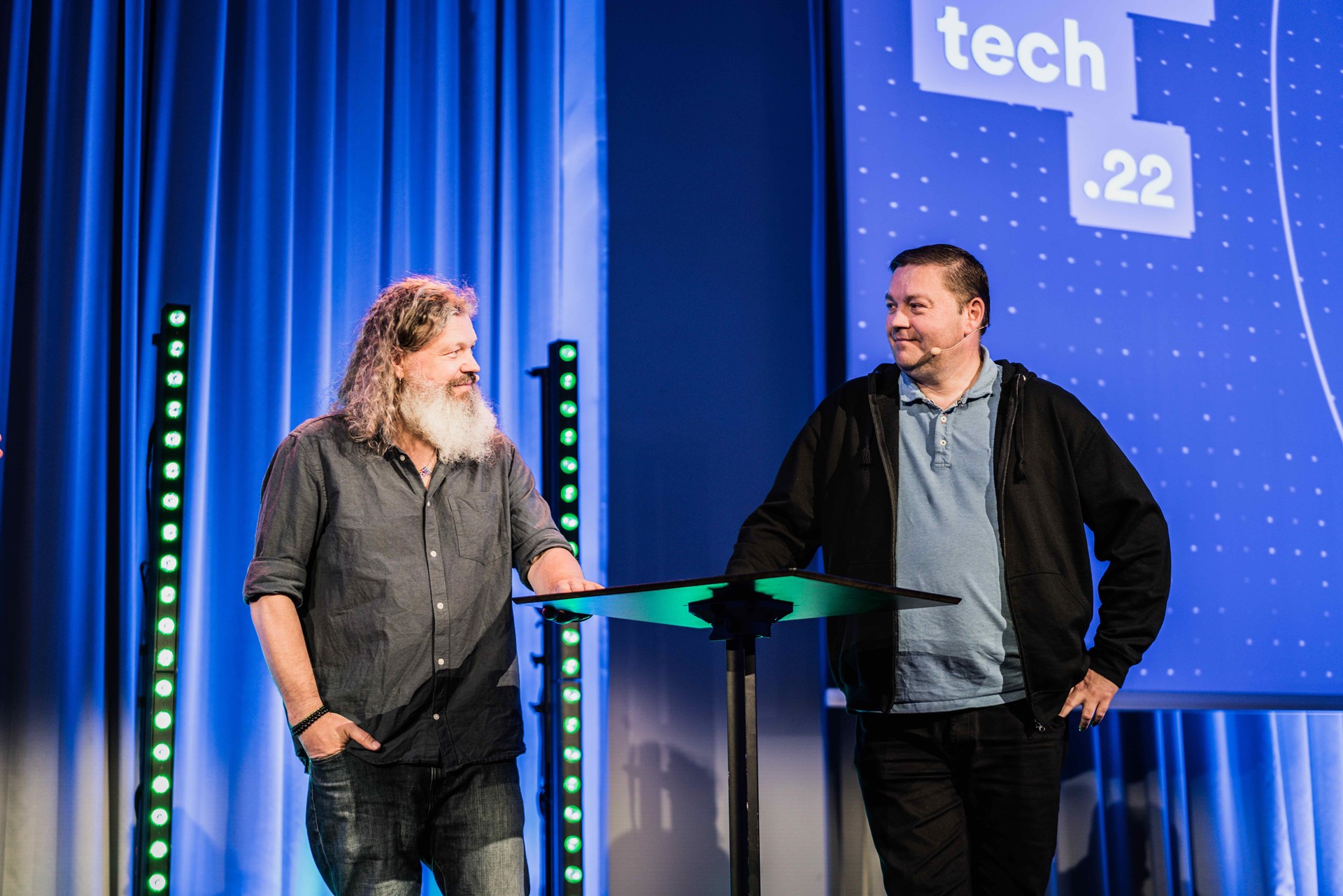
The metaverse and the future of the media landscape
Ten years from now, will we live a large part of our lives in a virtual world? What is the metaverse exactly? How will web3 affect the media industry regarding the new virtual ownership of NFTs and DAO's that might be changing the relationship between the users and the producers? Is the new creator economy on the rise? What are the long-term perspectives? And not least: How should your company react to all of this?
Sofie Hvitved, a Futurist and Senior Advisor and Head of Media at the Copenhagen Institute for Futures Studies, presented some of the newest trends affecting the future of how we will live, work, interact, transact, and consume media.
– We have to take the future more seriously. I am sending you a wake-up call from the future. The media industry should work more structured with the future, says Hvitved.
Metaverse is part of the future that the media should spend more time on, according to Hvitved. Metaverse is defined as "a virtual-reality space in which users can interact with a computer-generated environment and other users," according to Oxford Languages.
– What is the metaverse? It's the seamless convergence of our physical and virtual lives with overlapping realities, says Hvitved.
According to Hvitved, there are five myths about the metaverse.
One company will build the metaverse on its own.
The metaverse is just a new Second Life.
The metaverse is dystopian/utopian.
The metaverse is the same as web3.
The metaverse is already here.
Hvitved says there is a shift in how we value physical and virtual reality.
– Most of us value physical reality more than virtual reality, but it's the opposite for young people. Children no longer want fishing rods for Christmas; they want Roblox gif cards, says Hvitved.
The development of the metaverse will depend on a set of critical technologies.
She mentions the soccer club Manchester City as an example of a company working with the metaverse. They are building a virtual stadium in the metaverse.
How to get Metaverse-ready
Hvitved has five tips on how we can get Metaverse-ready:
Play around with apps and lenses.
Buy a pair of VR glasses.
Buy an Augmented Reality Developer kit.
Get a crypto wallet and buy a non-fungible token.
Create an avatar and visit a virtual world.

Green computing
– If IT were a country, it would be ranked number 11 in energy consumption, and the IT industry pollutes more than the aviation industry. IT produces as much pollution as Japan, says Anders Norås, Director of Software Leadership at Avanade.
– Green computing is always about energy-efficient servers, hardware without hazardous materials, and other things that appeal to hardware buffs. Cloud computing is great, but what else can we programmers do to help the environment?
With his lightning talk Green Code in 2009, Norås explained how to be eco-friendly by writing better code and more intelligent business logic. More than a decade later, in an age where we must deliver on the UN Sustainability Goals, Norås revisits his 2009 presentation to explore how programmers can contribute to eco-friendliness by writing better code and designing better software.
– One crypto transaction consumes the same energy as two months in an average Norwegian household, says Norås.
He recommends Greensoftware.org for tools and tips for developing more green solutions.
– Small things matter, and we can do those things. If we are closer to the customers, we use less energy. If we have better products, we use less energy, says Norås.
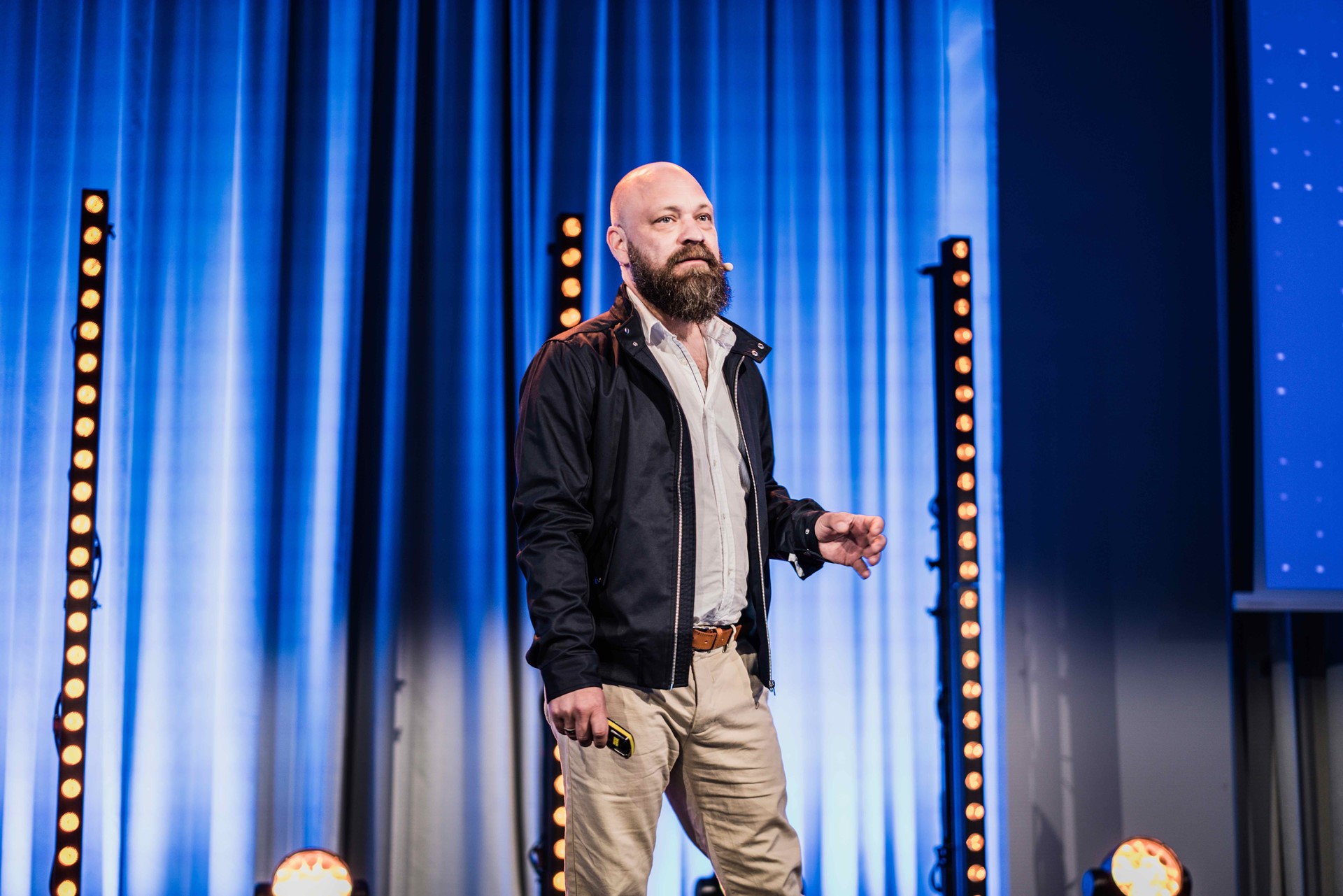
A bad piano and a new route to work
Tim Harford is an economist, journalist, and broadcaster. He is the author of several books, including "The Next Fifty Things That Made the Modern Economy", "Messy", and the "The Undercover Economist". Harford is also a columnist at Financial Times and hosts the podcast Cautionary Tales. In the podcast, he tells true stories about factual mistakes and what we should take away from them. At MCB Tech .22 he delivered the talk "Can disruption make us more creative"?
Harford draws the lines to a jazz concert on 24 January 1975. An 18-year-old jazz enthusiast arranged a jazz concert for the first time. She had managed to get the famous jazz pianist Keith Jarrett to the opera house in Cologne in Germany. Jarrett had specified what sort of piano he wanted, but the wrong piano ended up in the opera house due to misunderstandings. It was smaller than desired piano and not up to the quality standards Jarrett required. "It's a terrible piano. I don't want to play", was his reaction. The young organizer begged him to play. One thousand four hundred people were eagerly waiting for the concert in the opera house. Reluctantly, Jarrett agreed to play.
– If the piano does not work and you sit in front of 1400 people, you pay attention. If things are a little bit more difficult, you pay more attention. Jarrett had never tried to play on a piano like that before, so his first reaction was to deny playing on it. But when he went on and played this piano, the result was astonishing. Luckily, the concert was recorded.
– The Köln Concert album is the live recording of solo piano improvisations by Jarrett. It became the most sold jazz album in history. Ever since I first heard this story, it has obsessed me, says Harford.
He points out how we all can have a jazz story in our lives and how we can be more open to innovation.
– You like to do things in a certain way, and suddenly that option is blocked. Then you try to do things differently.
Harford talks about the London Underground as an example of travel patterns. If one line is closed one day, you must change your route or find alternative transport. Maybe you never switch back to your original route because the new one you were forced to do turns out to be better.
According to Harford, this might be the formula for innovation: Increased attention and blocking of the most comfortable solution.
He says the obstacles you meet in innovation are other people.
– Experiments in problem-solving show that a group with three friends and one stranger performs best. It might have felt awkward the communication might not have been perfect, but still they got the best problem-solving results, says Harford.
– How do you make numbers enjoyable, asks the host.
– A number in itself is never interesting. You have to connect the numbers to the people – that is when it gets exciting. Help people be curious. I am curious.
– How can we stimulate our employees' creativity, the host asks.
– Let teams who don't understand each other work together.
He says we should keep in mind that the enemy of creativity is boredom.
– The boredom is slowing us down, he says.
– What is your advice for all of us to be more creative?
– We need to find a way to force ourselves into more obstacles and difficult situations. Start reminding ourselves to challenge ourselves. From time to time, we all have to sit down and try to play the unplayable piano.
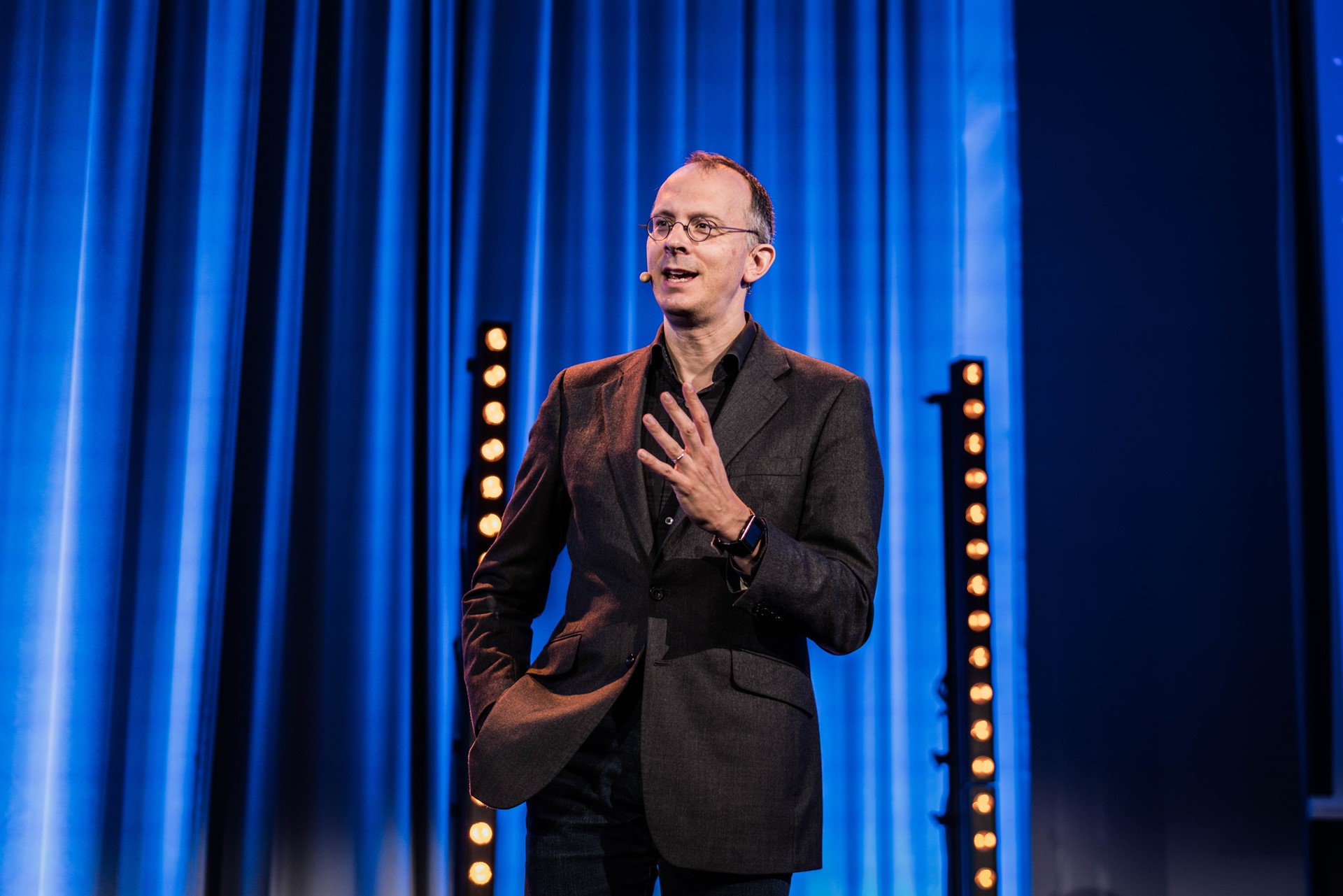
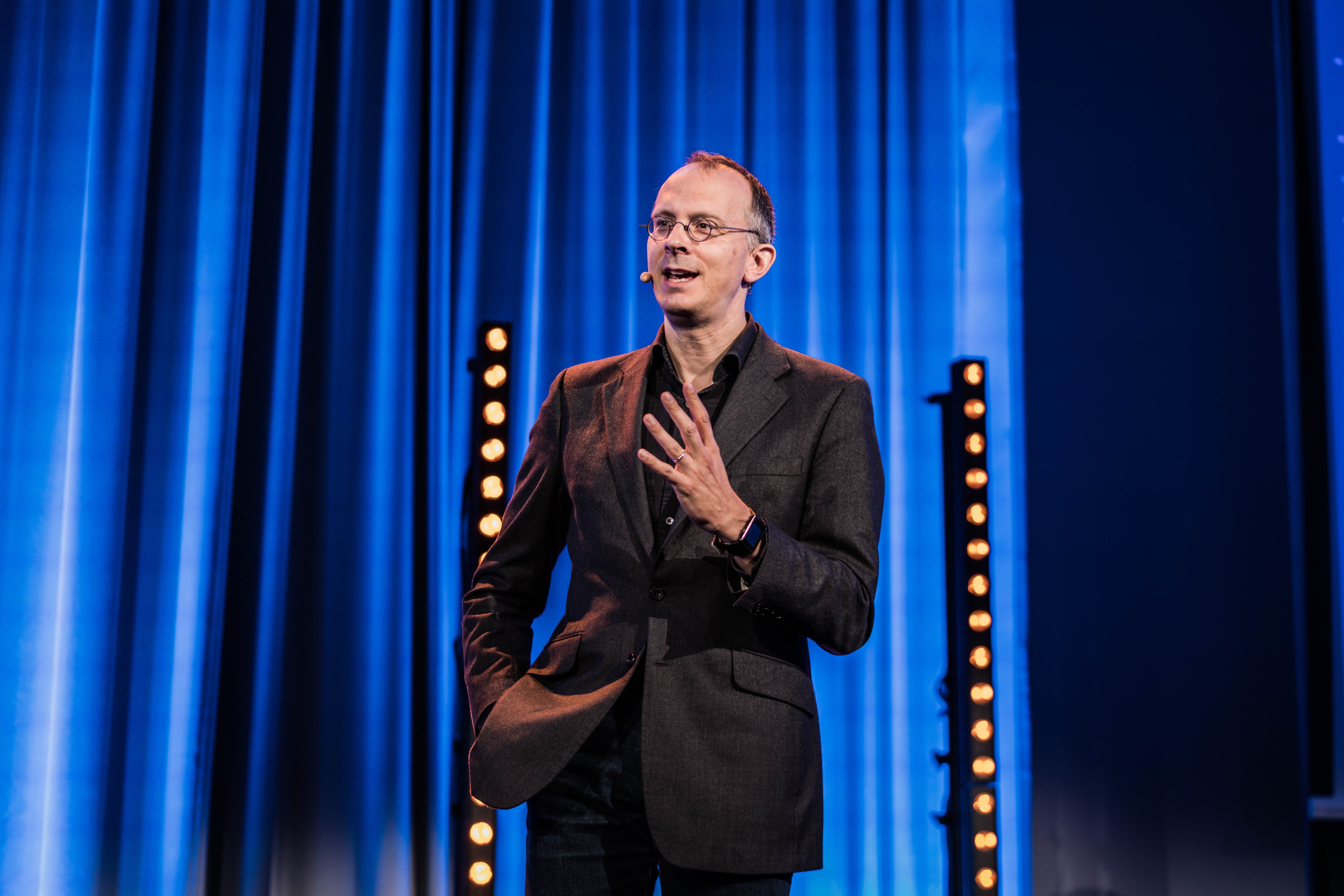
Responsible AI
– When was the last time you thought about the future? We are thinking about the future all the time. We are planning the holiday and signing up kids for activities. AI will be part of our lives. We have to think of the future with AI, says Agnes Stenbom, Head of Lab at Schibsted.
There has been much talk about the ethical risks of Artificial Intelligence (AI) in recent years, with tech companies and regulators alike assessing the downsides of the new technological opportunities. But what does it all mean in practice? In her talk at MCB Tech .22, Schibsted's Agnes Stenbom explained why "responsible AI" is not an end goal but an essential part of creating AI-powered products and services that users trust, enjoy and are willing to pay for – today and in the future.
Stenbom says having a critical view of AI and creating a culture and process for AI in your business is essential.
– There's no time like the present to shape future developments.
There are many risks in using AI, and there are big scandals when AI is used wrong.
– When Schibsted finds a risk, we are trying to be laud about it.
She emphasizes that responsible AI is not a destination but a practice.
– It's a practice of empathic interrogation. It's not an end goal but an ongoing process.
She mentions three things you can do today to contribute to responsible AI development:
Map out your current use of AI.
Discuss your preferred future.
Interrogate a current use case.
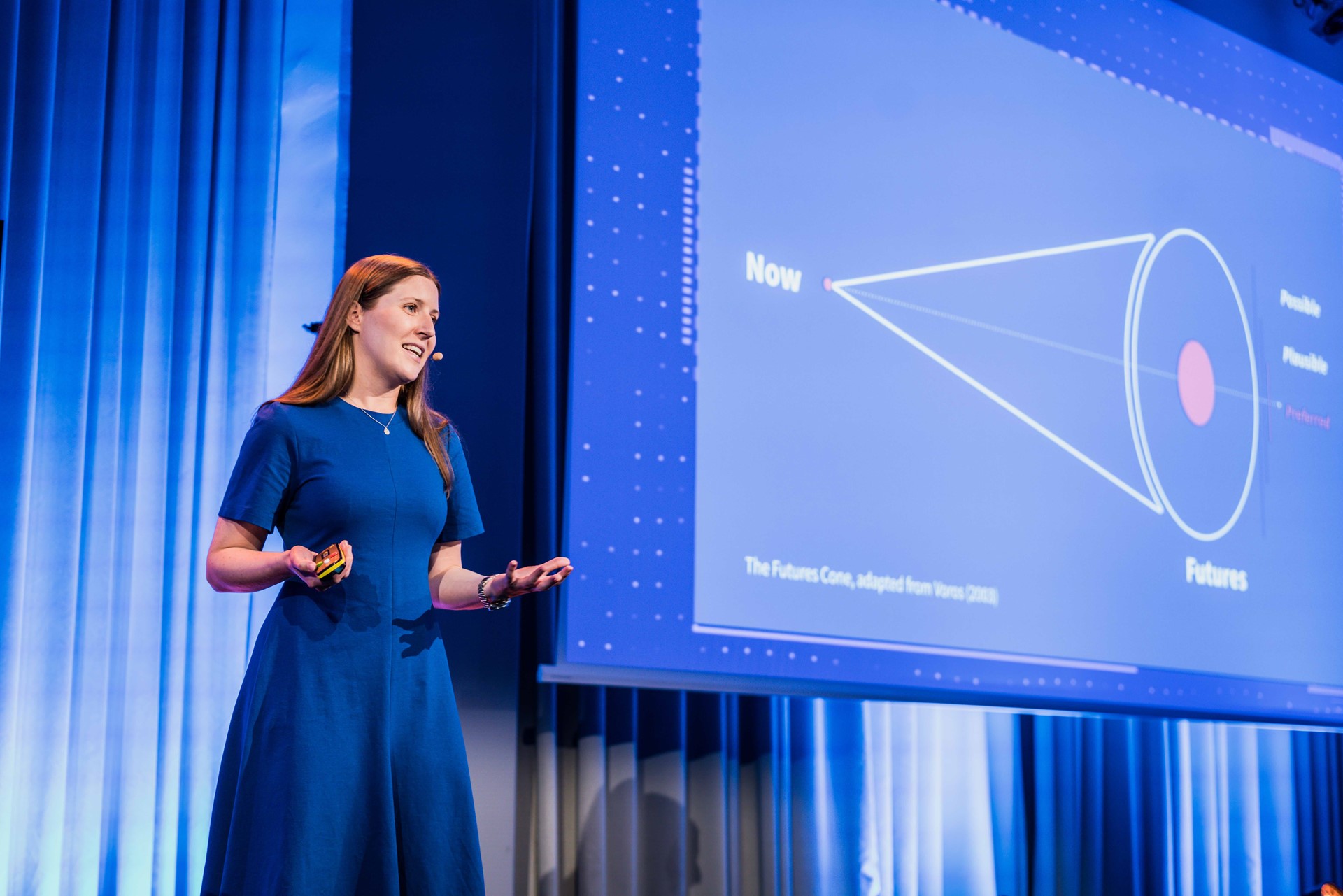
From Innovation Theatre to Invincible Company
– The best way to find good ideas is to have plenty of ideas and then test those ideas – and just follow those that gain traction, says Tendayi Viki.
Viki is an award-winning author and an expert on how to innovate within large corporations. In his books "The Corporate Startup" and "Pirates in the Navy", he outlines core principles and practices that established companies can use to build their innovation ecosystems. Managing innovation processes and your core business at the same time is hard. Viki was invited to MCB Tech to educate us on this topic.
He mentions the company Bosch as an example. They invested in 214 different ideas, and each team got 120.000 euros. They ended up proceeding with 19 of them.
– If a project is the CEO's "pet project" – the CEO's favorite project – you are "condemned" to succeed. The CEO should not have a pet project. The traction should decide whether the project will succeed or not, says Viki.
To find evidence for your idea, it's crucial to separate different evidence levels.
– Five people that buy your product is stronger evidence than 1000 that say they will buy it, says Viki.
He recommends the free tool Innovation Project Scorecard. It categorizes how close your business is to finding a business model that works.
Viki compares innovation culture with plants in the garden. You need to give the plants what they need to make them grow.
He recommends analyzing the following three things:
Outcomes – what are our desired outcomes?
Behaviours – what behaviour will allow us to achieve our desired outcomes?
Enablers/blockers – what prevents us from performing the proper behaviour?
– The most important enablers are leadership support, organizational design, and innovation practice, concludes Viki.
